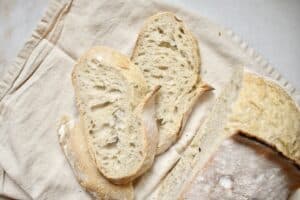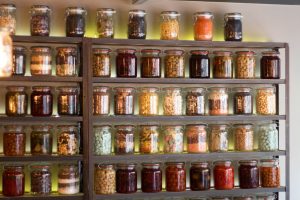I first “met” Eric Toensmeier through his recent narrative, Paradise Lot, which tells the story of creating an edible garden on an urban lot in Massachusetts. This was the first time I realized that the gardening methods I intuitively practiced had a name: permaculture. I thought I was lazy. Turns out, I was part of an ecological movement. Who’d’ve guessed?
Permaculture, like most trends, is an ancient idea rebranded under a new name for a new generation. It’s hard to come up with two definitions that match, but, generally speaking, permaculture is the practice of establishing ecosystems that nourish the land, the plants, and the people, animals, and insects that live there. It usually makes use of organic practices and native plants, and it often incorporates plants that are multi-purpose. Maybe your shade tree also provides you with fruit. Or you grow sunflowers to attract pollinators, nurture butterfly populations, and provide winter food for the birds (not to mention the beautiful flowers for your own enjoyment). All of these, on some level, reflect permaculture practices.
In my own garden, I’ve long-used the phrase, “If it’s going to grow here, it should be able to do so without my help.” For the most part, this is true in our little patch of dirt. The annual flowers in my garden are ones that self-sow and travel around the property as they please. The perennials are ones that withstand our area’s unpredictable weather, freezing winters, and long dry spells. The trees and bushes are either native plants, well-suited to dry climates, or fruit trees that give our family some reward for our investment of resources. The one place in my garden that has remained stubbornly opposed to this philosophy? The vegetable garden.
Like most people, I have always believed that (apart from rhubarb and asparagus) edible vegetables were annuals, needing lots of intense attention for short periods of time in order to reap a harvest. But in Perennial Vegetables* Eric Toensmeier has opened my eyes to a world beyond rhubarb. Eric’s book is the first of its kind, giving a comprehensive list of edible perennial vegetables from all over the world, over 100 of them all told. As expected, the majority of these vegetables are best-suited to America’s more temperate regions in the south (don’t even get me started on Hawaii), but there are still abundant, sometimes surprising, options for all of the other climates. And, as Eric explains in detail in Perennial Vegetables and proves in practice in Paradise Lot where he grows a banana tree in Massachusetts, one can do magical things with microclimates.
Perennial Vegetables is divided into three parts. The first part focuses on ways of gardening with perennial vegetables. Knowing that this is an area relatively unknown to modern gardeners, Eric is generous with his experience, giving lots of advice and tips on incorporating perennial vegetables into your garden. There is an entire chapter dedicated to design ideas. There are pages of lovely and inspiring watercolor paintings of perennial vegetable plantings. Those plants in the pond below? Yup. Completely edible.
He also provides plenty of information on selecting, planting, and growing all of the vegetables he suggests, with lots of illustrations for people like me who learn better from pretty pictures than from detailed paragraphs.
Part II is a comprehensive list of all the species recommended by Eric Toensmeier. He is quite thorough in his research, and each listing will give you all the information needed to determine if a particular plant is suited to your property.
The third part is a list of resources–lists of vegetables by climate type, additional books on permaculture, and, because many of these vegetables are difficult to come by, sources for obtaining seeds and plants.
If given the chance, Eric Toensmeier will challenge your understanding of growing food, and expand your idea of a kitchen garden. Having found this book in the middle of the growing season, I’ve only had time to read enough to have my interest piqued. It’s on the top of my reading pile for the first winter snowfall, and I intend to be harvesting some of my own perennial vegetables by this time next year.
* Review posts are my opinions on items that were sent to me free of charge. The items were given to me, but the thoughts and opinions are my own. I only provide reviews of items that I find to be truly worthy of recommendation.










